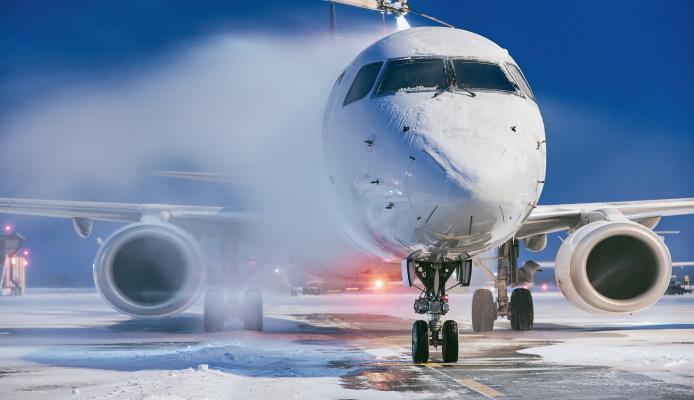Weather can significantly impact the safety, efficiency and reliability of air transportation. Impacts can occur to infrastructure, ground operations, flight planning, and operations in the air. Weather impacts include safety hazards to personnel on the ground (e.g., lightning, or extreme temperatures), crew and passengers in flight (turbulence), aircraft performance limitations or damages (airframe and engine icing, lightning), flight reroutes or diversions (avoidance of thunderstorms, turbulence and icing hazards, minimizing flights against a strong jetstream), delays due to airspace or airport capacity limitations, and flight cancellations. Infrastructure impacts may be caused by lightning strikes to communication and lighting systems, power outages, or damages to tarmac surfaces, storm surges may flood low-altitude runways near major water bodies, or heavy snowfall or freezing rain will necessitate winter maintenance operations that can cause temporary capacity limitations and delays. Flight delays or cancellations can also be the results of excessively hot temperatures (yielding reduced takeoff lift) at airports with limited runway length.
Commercial, Business, & General Aviation
These types of flight operations make use of airports. The operational weather sensitivities can be significant, but the aviation industry has gained substantial experience from dealing with weather impacts. NCAR research has generated many weather hazard guidance products that are now operationally serving the aviation industry to minimize avoidable weather impacts. These products are available from the NOAA National Weather Service Aviation Weather Center.
Uncrewed Aerial Systems & Urban Air Mobility
The aviation industry is rapidly progressing on advanced air mobility operations. The emerging operations include small uncrewed aircraft for cargo delivery or reconnaissance and passenger-carrying urban air mobility taxis. These low-altitude operations may not use traditional airports and instead utilize vertiports (possibly on rooftops in urban settings) or other locations as appropriate. A wide variety of aircraft designs exists, including fixed-wing, multi-rotor, and hybrid aircraft that may take off and land vertically using electric propulsion. These aircraft tend to be significantly smaller than commercial, business, and general aviation aircraft and, thus, will likely experience increased weather sensitivities. The specific weather limitations remain to be determined.
Advanced air mobility flight operations will take place in the lowest several hundred meters of the atmosphere (i.e., boundary layer), which is strongly influenced by the land surface characteristics, such as varying vegetation, distinct land/water contrasts, complex natural terrain and man-made urban landscapes. The weather experienced in the atmospheric boundary layer can be very dynamic and highly location specific. NCAR scientist have been developing high-resolution micro-weather prediction capabilities to capture the fine-scale details of weather phenomena occurring throughout the boundary layer. Close collaboration with the aviation industry will result in the location and time-specific actionable weather impact guidance necessary to serve low-altitude flight operations.
Space Launch & Travel
The aerospace industry has seen dramatic increases in demand for space launches and space travel. The launch commit criteria include aspects of weather that may be highly specific to a particular type of spacecraft. Typically, clouds associated with thunderstorms and lightning near spaceports are of particular concern as well as the wind conditions throughout the depth of the atmosphere. Freezing temperatures may also cause limitations. Similarly, end of mission landing weather criteria need to be considered as well, which include cloud coverage, precipitation and lightning, and particularly wind and turbulence on approach to the landing area. NCAR scientists can assist the aerospace industry with collaboratively assessing weather sensitivities of space launch and return to determine needs and requirements for enhanced weather guidance.
